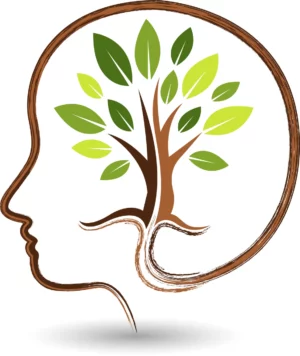Gateways to Lightness

“Every day I eat, play, sleep and repeat. Is it wrong to live my life like this?”, asked a tertiary student during a talk that I recently conducted. Well, this could be an easy or a difficult question to answer, depending on who the person is asked to answer it…
As my talk was about the statuses and conditions of mental health among young people, the question was raised during the Question and Answer segment, to which I had to provide a quick and short reply.
I remember I acknowledged that there was absolutely nothing wrong with the situation, as it was what normal human beings do. In fact, it also applies to the animal kingdom. For life and livelihood, we need to keep our bodies healthy to function well and behave in the desired manner. If we do not have a strong body and a balanced mind, we will not be able to use any power even if we were extraordinary human beings.
On this basis, I went on to show that the real challenge is what to do and how to offer other meaningful and satisfying things, after the daily routine of eating, playing, sleeping and repeating. To me, this is a more crucial question for us to take a moment and consider.
“It’s OK not to be OK”
It is especially important for me to recognise and be aware of psychological disturbances, mental destabilisation and emotional disruptions in young people. What they experience and encounter is really real and true. Never doubt their pain.
After all, our youth hold the key to creating a better future for our world. Keeping their mental state and mind in a stable and healthy perspective is essential. This expectation goes beyond the basic need of educating for knowledge, training for skill sets and fostering moral values.
Dr Daniel Fung, head of Singapore’s Institute of Mental Health, said that he has observed an uptrend in teenagers with emotional dysregulation, who may display destructive behaviour either towards themselves or towards things around them.
With this view and attitude, we should accept that the mental conditions of some youths are “not OK” at a particular situation and time. Besides this, “it is OK” for them to be in that state, hopefully for a short while. This position opens a vital and needed door for us to provide them with the right timely support and direction.
Take for example the story of Ms G, a young ex-client of mine.
“This is for your own good”
Ms G (name changed for confidentiality), was a Junior College student in Singapore. She engaged my therapy service because she felt “jaded, fatigued, lost” and she did not know what she “should do”.
Though Ms G excelled in her studies, she was dissatisfied and unhappy as she was taking some subjects that totally did not appeal to her. Forced by her parents’ pet phrase, “This is for your own good”, she was demanded to pursue these subjects that she did not like nor was interested in.
The endless cycle of assignments and examinations of these subjects which Ms G was expected not only to do and take, but to excel in them, drove her to an unbearable bottomless pit of emotional turmoil. Finally, she “collapsed and was paralysed” psychologically and mentally.
It was not easy to process Ms G’s affect concerning her emotions, feelings, sensations and moods, as she kept a distance from me. Obviously, these therapy sessions were arranged by her parents and “it was for her own good”.
Rumi highlighted “The gates made of light swing open. You see in.”. I saw the opportunity for me to use the same phrase as a key to enter Mr G’s tight-locked castle in her mind.
It was very helpful when I invited Ms G to comment on her parents’ pet phrase, allowing her to express her voice unreservedly. Along the way, I explored other possible angles and perspectives on why, what and how her parents had done and decided for her since her childhood.
With much compassion, empathy and understanding based on a non-judgemental disposition, Ms G eventually became open with me. Such a breakthrough in establishing a therapeutic alliance, facilitated a more directional and focused intervention for dealing with her unmotivated spirit and depressive state of mind.
“You don’t need to own them”
One of the therapy techniques and tools used and highly appreciated by Ms G was what I called “Externalisation”, in addressing her persistent low moods. I believe it worked for Ms G effectively as she was a very sensitive young lady about her own emotions and feelings.
In the therapeutic process, I requested Ms G to be very mindful of the gloomy emotions and grim feelings that she noticed and observed, whenever they engulfed and immersed her, which was totally out of her control and influence.
I guided Ms G not to possess such negative affect with vigilant self-talk, like:
- “Oh…There’s an emotion of sadness.”
- “Yes, this sense of melancholy is waving in again now.”
- “Ah…Isn’t it a sentiment of grief creeping around?”
- “Hmm…Here’s a feeling of sorrow.”
- “See! A sensation of heaviness is forming on the chest of the body.”
- “Right…There’s a mood of blues sneaking inwards at this moment.”
This is a high level of consciousness directed the unwholesome emotions, feelings, sensations and moods externally, by not having “I, me, my and mine” involved.
Ms G was reminded that she did not need to own the adversative affect, of constantly telling herself that “I am sad”, “I am in a bad mood”, “I am not happy” etc. This mindfulness transformed her usual reactions to becoming responses, toward the destructive affect.
I further required Ms G to objectively check and scrutinise how the ebbs and flows of the unfavourable affect gushed to her and drowned her. This process assisted her to be aware of and understand better on what were the possible triggers and causes.
These moments of notification, observation, identification, labelling, naming, exploration, examination and investigation, are built on a non-judgemental stance as a cornerstone.
During these stages, intense and significant harmful affect requires the necessary place, space and pace for proper processing. Ms G told me how she could feel a movement of uneasiness and restlessness that rose and fell, before finally disappearing.
This therapeutic technique was adopted and adapted for Ms G’s conditions, primarily because of her personality and temperament. And through frequent practices, her sullen and surly moods stabilised, and eventually became more balanced.
“There is a crack in everything, that’s how the light gets in.”, says Leonard Cohen. After this stage of intervention, I seized the opportunity to facilitate a heart-to-heart conversation between the parents and Ms G. After much time, energy and resources, an agreement was made that Ms G was to continue with her Junior College in the same subjects, and she would be allowed to select her preferred faculty in the University she wanted.
I echoed what Carl Jung had emphasised, “Even a happy life cannot be without a measure of darkness, and the word happy would lose its meaning if it were not balanced by sadness.”.
Pertaining to the episode in this family, the ripple effect of such a profound family dialogue cleared the relationship misconceptions and misperceptions between the parents and child.
Their expectations and affection with and for each other were re-defined and comprehended with new meanings and deeper love. The ties and bonds in this small family were thus becoming tighter and stronger.
In the last therapy session, Ms G declared to me that she sensed “lightness” in her, a feeling of weightlessness and brightness. To her, it was an outcome of her regaining emotional calmness and serenity.
The promise of Ms G’s parents in supporting her future academic pursuit, greatly energised and motivated her to finish her studies, which she did with flying colours. And Ms G indeed managed to enrol herself on the course programme she desired, at her chosen University.
It is gratifying to know that Ms G, one of our youths who hold the key to creating a better future for our world, had already used it to open a gateway for shaping and moulding her personal future first!
I will love the light
for it shows me the way,
yet I will endure the darkness
for it shows me the stars.
Og Mandino
Note: As this article is mainly catered to general members of the public, the case conceptualisation, intervention formulation, discussion and terminologies used are deliberately simplified and presented for an easy reading, comprehension and relevancy.
Image: https://www.flaticon.com/free-icon/gate_1207197
Quotes: https://www.goodreads.com/quotes/25498-i-will-love-the-light-for-it-shows-me-the
This article is written based on Krish Phua’s greatest aspiration to be a mind healer, facilitating his clients to cultivate and explore “Inside Mind Insights” for improving their Wellness, Wholeness and Wiseness.
This article was originally published on www.oberdanmarianetti.com on 22 Feb 2023.





